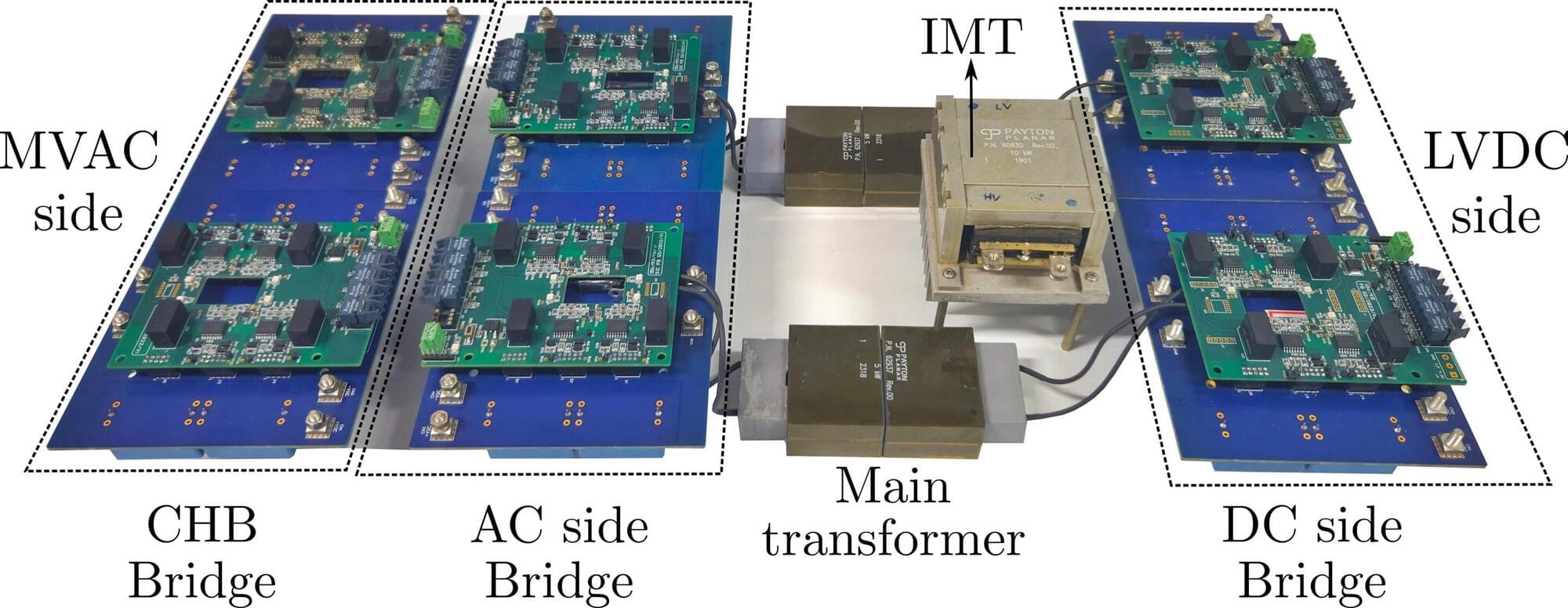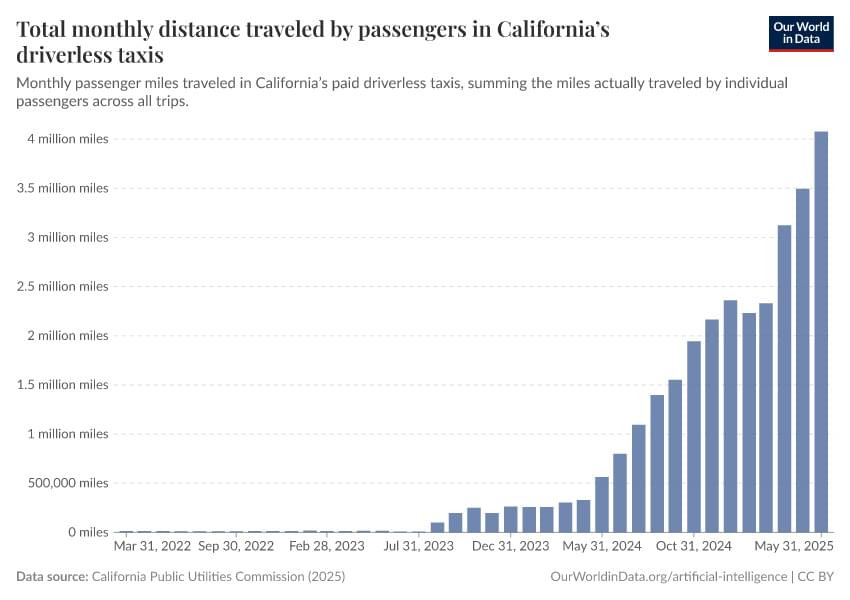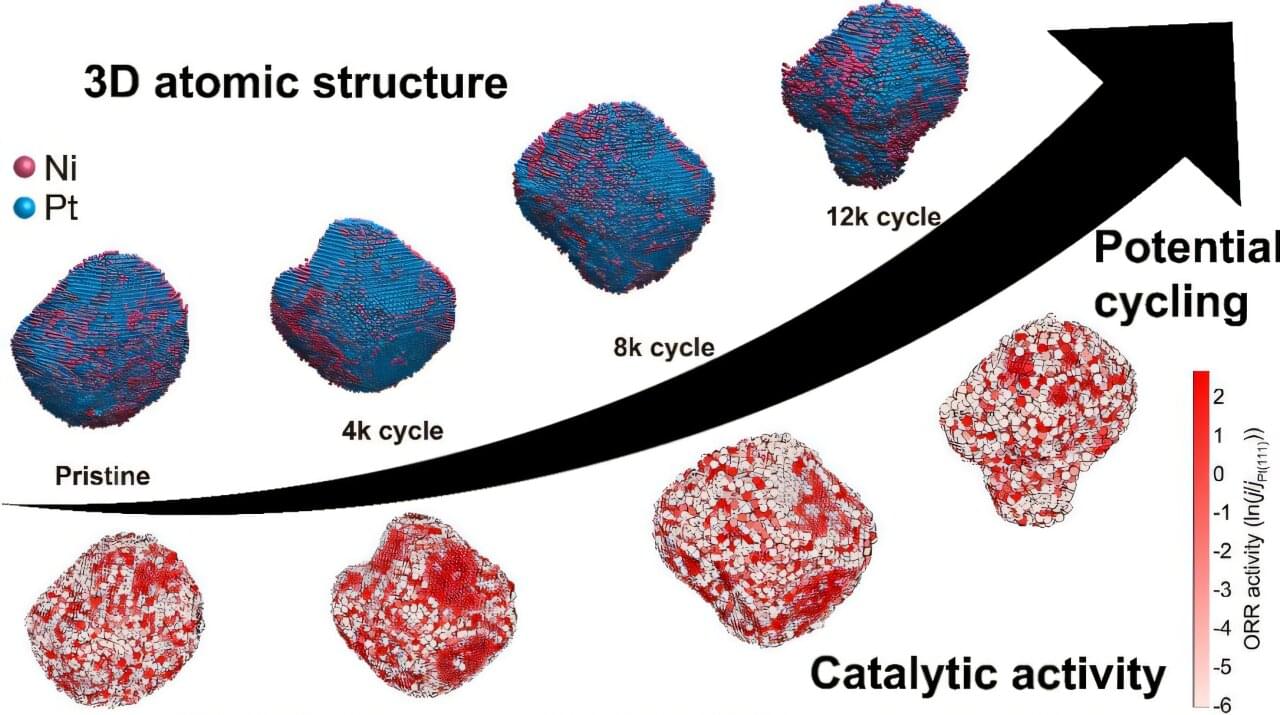The BYD Yangwang U9 Xtreme cracked 308 mph at a German test track to become the fastest production car EVER made!
Category: transportation – Page 10

Direct grid connection technology provides fast charging solution for electric vehicles
With the surging popularity for electric vehicles (EVs), rapid charging is a challenge as it requires power delivery exceeding 1 MW (which can power about 1,000 homes). Conventional charging stations rely on bulky line frequency transformers (LFTs), which are expensive due to extensive use of copper and iron. These stations also have multiple conversion stages involving stepping up or down current, or converting AC to DC and vice versa. This can greatly increase cost and reduce efficiency.
To solve this problem, researchers at the Department of Electrical Engineering (EE), Indian Institute of Science (IISc), in collaboration with Delta Electronics India, have developed a novel cascaded H-bridge (CHB)-based multiport DC converter that directly connects to the medium-voltage AC (MVAC) electricity grid. This eliminates the need for large and expensive LFTs.
Published in IEEE Transactions on Industrial Electronics, the study shows that such converters can help address the growing power demands of fast-charging EV stations, crucial for scaling up India’s EV infrastructure.

New light-powered gears fit inside a strand of hair
Researchers at the University of Gothenburg have made light-powered gears on a micrometer scale. This paves the way for the smallest on-chip motors in history, which can fit inside a strand of hair. The research is published in the journal Nature Communications.
Gears are everywhere—from clocks and cars to robots and wind turbines. For more than 30 years, researchers have been trying to create even smaller gears in order to construct micro-engines. But progress stalled at 0.1 millimeters, as it was not possible to build the drive trains needed to make them move any smaller.
Researchers from Gothenburg University, among others, have now broken through this barrier by ditching traditional mechanical drive trains and instead using laser light to set the gears in motion directly.


This Tiny $7,000 Electric Car Is More Popular in Japan Than Toyota’s EVs
Japanese startup KG Motors is building a stylish, single-seat electric car for just $7,000, and has pre-sold 3,300 that it plans to deliver to customers by March 2027.
That’s more than the 2,000 EVs Toyota sold across Japan in all of 2024, according to Bloomberg. Called the “mibot,” KG’s car has a limited 62-mile range and a 37mph top speed.
Could the single-seat ‘mibot’ ignite an all-electric revolution in hybrid-heavy Japan, or even inspire more openness to small, affordable vehicles in the US?

If every US home and personal vehicle goes electric, power outages could spike unless key measures are taken
A future where all homes and vehicles in the U.S. are fully electrified could overwhelm power supply and risk outages unless key upgrades are made, says a new study conducted by Purdue University engineers. But a few strategies could cut two-thirds of the potential costs of reinforcing the nation’s distribution grid to handle this demand.
Electrifying would mean switching a home’s heating system from a boiler to a heat pump and transitioning from gas-or diesel-fueled vehicles to electric vehicles.
“If we install a whole bunch of new electric heating systems for homes and use more electric vehicles and electric water heaters, then we’re going to increase electricity demand a lot. And that’s basically going to require putting in thicker wires, bigger transformers and other infrastructure into the power grid,” said Kevin Kircher, a Purdue assistant professor of mechanical engineering and faculty member in the university’s Ray W. Herrick Laboratories. “And if that happens, utilities will pass the cost of those upgrades to us, the customers.”

Lithium-metal batteries can charge in 12 minutes for an 800km drive
Korean researchers have ushered in a new era for electric vehicle (EV) battery technology by solving the long-standing dendrite problem in lithium-metal batteries. While conventional lithium-ion batteries are limited to a maximum range of 600 km, the new battery can achieve a range of 800 km on a single charge, a lifespan of over 300,000 km, and a super-fast charging time of just 12 minutes.
A research team from the Frontier Research Laboratory (FRL), a joint project between Professor Hee Tak Kim from the Department of Chemical and Biomolecular Engineering, and LG Energy Solution, has developed a “cohesion-inhibiting new liquid electrolyte” original technology that can dramatically increase the performance of lithium-metal batteries. Their paper is published in Nature Energy.
Lithium-metal batteries replace the graphite anode, a key component of lithium-ion batteries, with lithium metal. However, lithium metal has a technical challenge known as dendrite, which makes it difficult to secure the battery’s lifespan and stability. Dendrites are tree-like lithium crystals that form on the anode surface during battery charging, negatively affecting battery performance and stability.
Why maglev trains thrive in Asia while US and Europe lag behind
Maglev momentum: Why Asia speeds ahead while Western high-speed projects derail.
Smooth, fast, and futuristic. Maglev trains are transforming Asia’s mobility while the West struggling to keep up. Find out why.

Atomic ‘CT scan’ reveals how gallium boosts fuel cell catalyst durability
Hydrogen fuel cell vehicles have long been hailed as the future of clean mobility: cars that emit nothing but water while delivering high efficiency and power density. Yet a stubborn obstacle remains. The heart of the fuel cell, the platinum-based catalyst, is both expensive and prone to degradation. Over time, the catalyst deteriorates during operation, forcing frequent replacements and keeping hydrogen vehicles costly.
Understanding why and how these catalysts degrade at the atomic level is a longstanding challenge in catalysis research. Without this knowledge, designing truly durable and affordable fuel cells for mass adoption remains out of reach.
Now, a team led by Professor Yongsoo Yang of the Department of Physics at KAIST (Korea Advanced Institute of Science and Technology), in collaboration with Professor Eun-Ae Cho of KAIST’s Department of Materials Science and Engineering, researchers at Stanford University and the Lawrence Berkeley National Laboratory, has successfully tracked the three-dimensional change of individual atoms inside fuel cell catalysts during thousands of operating cycles. The results provide unprecedented insight into the atomic-scale degradation mechanisms of platinum-nickel (PtNi) catalysts, and demonstrate how gallium (Ga) doping dramatically improves both their performance and durability.
Tesla’s NEW AI5 Chip will be a 40x improvement over AI4
The Electric Viking